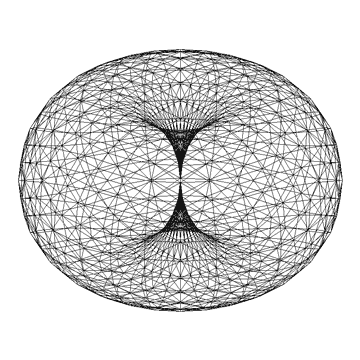
THE CALLS
Words and Images
Themes
FLESH
In the architectural imagination, flesh – body and soul – not only inhabits buildings, flesh merges with architectural bodies. Provocatively impressed on the right buttock of the Diller-Scofidio chimera, the author-architects define Flesh (1994) as “the outermost surface of the ‘body’ bordering all relations in ‘space.’” (title page) This collection of texts (conversations, lectures, essays, copies, recordings, eaves-droppings) and images (photographs, slides, ads, drawings, overlays, film stills, models) explore transgressions of that border revealing the merging of bodies – mutant bodies – in ever-changing relationships with space in multiple dimensions. Published four years earlier, in Monsters of Architecture, Frascari writes that “[i]n architecture the grotesque body is a body in a continuous metamorphosis, a body freed from the mirror of itself - freed from similar resemblance.” (p35) Stasis is a persistent figment of our collective imagination. Is the architectural body ever freed from itself, from its own figurements? Where are the constantly evolving boundaries of the flesh and space? How does extended reality complicate our understanding of our own flesh?
GEOMETRY
Melancholy, a winged figure – often interpreted as a personification of Melancholy or a self-portrait of Dürer himself – sits slumped in a contemplative pose amidst a seemingly disorganized clutter of unused scientific instruments and assorted objects associated with geometry. While scattered tools like a calipers, a claw hammer, a saw, nails, and a ruler hint at the creative process, their disarray evokes a sense of frustration, confusion, or being overwhelmed. This feeling is further reinforced by the inclusion of unfinished geometric forms such as a truncated polyhedron, a puzzling three-dimensioned object defying easy categorization. However, despite this apparent chaos, order emerges through the presence of specific geometric shapes. A perfect sphere rests on the ground, embodying its inherent harmony. Etched into the wall behind the figure, a 4 by 4 “magic square” suggests an underlying order within the throes of creative Melancholy. The use of these elements highlights the significance of mathematical and geometric principles in forming the foundation for artistic techniques such as linear perspective. Thus, geometry, an abstract embodiment of “noble science” and with enigmatic symbolism, continues to fascinate contemporary scholars and requires further exploration and interpretation.
SHADOW
Shadow – skiá presents itself in the dichotomy of stillness and shadow casting. Skiá is the silence of darkness, or staging of the shadow in which Dürer finds himself. Personified in Melancholy, Dürer is surrounded by shadow casting forms, drawing and building construction instruments, implying the once upon a time action, in the anima and its aim towards the intelligible. Analogically, the architect can find being personified in Melancholy, contemplating on the instrumental of the anima and the yearned transition to the vita activa. Historically, the practice of architecture benefits from the inherited wealth of soul-carrying figurations, which require the architect to be a storyteller and curator. This seventh session of the Frascari Symposium is interested in arguments addressing the question of a practice of architecture in which the instrumental demonstrates skiá as the active tracing of the inherited collection of figurations. Thus, representation is a form of staged reflection of the imaginal.
WORDS
Call for Papers
We invite scholars ranging from Ph.D. students to seasoned academics to submit an abstract addressing one of the three categories above: flesh, shadow, and geometry. Presentations will be fifteen minutes each, not including questions and discussions. Well developed submissions will be invited to contribute a full paper to a future publication.
Please submit abstracts of up to five hundred fifty five words for blind peer review no later than August 11, 2024 by emailing a pdf (5MB max.) of your abstract to: frascarisymposiumvii@gmail.com.
In the body of your email, please identify the author name(s), institution(s), abstract title, and the session to which you are submitting. However, do not include your name(s) or other statements identifying yourself and/ or your affiliations in the abstract itself.
Authors will be notified of their acceptance by October 11, 2024.



IMAGES
Call for Works
We invite you to contribute an original architectural drawing on the conference theme to be exhibited in conjunction with selected drawings by Marco Frascari. All drawings must be formatted in modules of 11” X 11” (e.g., 11” X 22” or 33” X 33”).
Please submit creative work for blind peer review no later than August 11, 2024 by emailing a pdf (15MB max.) of your drawing to: frascarisymposiumvii@gmail.com. In the body of your email, please identify the artist name(s), institution(s), and drawing title. However, do not include your name(s) or other statements identifying yourself and/ or your affiliations in the pdf itself.
Authors and artists will be notified of their acceptance by October 11, 2024.

